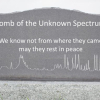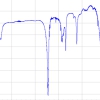Rachel C. Walton, Catherine R. McCrohan and Keith N. White
Faculty of Life Sciences, University of Manchester, UK
The presence of non-essential trace metals in freshwater systems poses a risk to the viability of populations. For this reason aquatic organisms have developed physiological and behavioural responses to such potentially toxic trace metals that enable them to cope with such exposure. Aluminium (Al) is the most abundant metal on earth and is highly toxic in its ionic form. In freshwaters at low pH the main site of action of Al in many aquatic animals is the gills, where it interacts with the surface (epithelial) cells causing an immune response and excess mucus production. This in turn interferes with gill function, preventing efficient oxygen exchange and leading to hypoxia.1 Despite this, Al is often considered to be relatively harmless, as at circum-neutral pH it is usually associated with hydroxides and silicates in freshwaters and soils—forms generally regarded as non-bioavailable. The toxic effects of Al at low pH usually occur in areas associated with anthropogenic events such as acid mine drainage and acid rain.
Our interest in Al at neutral pH stemmed from evidence that in freshly neutralised water Al was harmful to aquatic animals. For example, the relatively inert precipitates of Al, which form as pH increases, still cause gill irritation and toxicity in fish.2 We collected further evidence which showed that, at neutral pH, Al is both accumulated and toxic to a range of freshwater invertebrates,3,4,5 including those that do not possess gills, such as the great pond snail Lymnaea stagnalis. This evidence suggested that, even at pH7, Al could be toxic and that toxicity was not caused exclusively by physical irritation at the gill surface by Al precipitation. We subsequently used a range of complementary methods to explore cellular, physiological and behavioural mechanisms underlying Al accumulation and toxicity, and its eventual fate. In this article we discuss how these different techniques have enhanced our understanding of intracellular interactions involving Al, using the pond snail as a model organism.
Methods of exposure of snails to aluminium and their behavioural responses
Snails are housed in temperature-controlled tanks containing fresh water at neutral pH, to which Al is added. Aluminium levels are usually towards the high end of those found in natural freshwaters (250–500 µg L–1), and exposure usually lasts between 20 and 30 days. Tanks are cleaned, water refreshed and further Al added every two to four days; the exact timing depends on the experimental protocol and other factors such as whether we are also adding specific ligands such as dissolved organic carbon (DOC) to the water. Behaviour is assessed during the exposure period; either by measuring response time to a feeding stimulus such as sucrose, or by assigning an objective score to quantify overall activity level (see Figure 1). For the latter, individual snails are observed over a two minute period and are given a score for general activity, as well as “bonus points” for specific behaviours. The maximum available score is 12 points. Exposure to Al causes a dip in the score at around five days, followed by recovery in the medium term even when exposure is continued (see Figure 1). This initial dip followed by recovery indicates that snails are able to cope with Al toxicity in the short term, suggesting an internal detoxificatory mechanism. The initial dip in behavioural activity also shows that Al is bioavailable at neutral pH, even though the aquatic chemistry of Al might suggest otherwise. Addition of other chemicals, such as mimics for DOC, demonstrate how these also significantly affect the toxicity of Al.

Accumulation of aluminium in soft tissues
For any toxin to exert an effect it must come into contact with tissues or cells, and must also be in an available form so that it can interact with either intra- or extra-cellular processes. Traditionally, measurement of trace metals in tissues has been carried out using atomic absorption spectroscopy (AAS) or flame emission spectroscopy (FES), depending on the metal in question. The main limitations of such techniques are the detection limit for metals and the single element nature of the analyses. This makes them impractical for multiple metal analyses or when sample volumes are small, for example, owing to the small mass of the tissues analysed. Inductively coupled plasma atomic emission spectroscopy and inductively coupled plasma mass spectrometry (ICP-AES and ICP-MS, respectively) are now both increasingly used in trace metal research. These techniques allow simultaneous quantification of multiple metals, and detection limits can be as low as ppt for most metals with ICP-MS; detection limits for non-metals such as silicon (Si) and phosphorus (P) are generally higher at around 1 ppb. ICP techniques have an additional benefit for researchers studying Al as Si, which readily interacts with Al, can also be quantified so allowing analysis of both a metal and its potential ligand simultaneously with no risk of extra errors being introduced through sample splitting and dilutions for separate analyses. As many mechanisms of toxicity result in tissue imbalances in essential metals such as Ca, Na or K, ICP techniques also enable such effects to be examined concurrently.
For ICP analyses to be accurate and reproducible, careful treatment of the samples is vital. Both Al and Si are ubiquitous in the environment and so only acid-washed plasticware and ultrapure chemicals should be used. Tissues are usually acid digested and then often further oxidised using an equal volume of hydrogen peroxide prior to dilution of the samples with water to reduce the concentration of H+ before analysis. Samples in our studies are analysed using either a Jobin-Yvon JY24 ICP-AES, Perkin-Elmer Optima 5300 dual view ICP-AES or an Agilent 7500cx ICP-MS with matrix-matched multi-element standards.
Our results have demonstrated that Al accumulates in the soft tissues of snails, especially in the digestive gland, which is a large detoxificatory organ equivalent to the liver of vertebrates. The digestive gland contributes approximately 10% of the total mass of the snail soft tissues, yet often has 50% or more of the total body burden of Al (see Figure 2). Interestingly, we also demonstrated co-accumulation of Si with Al in the digestive gland, at a ratio of 2.5:1, consistent with ratios found in aluminosilicates such as allophane. We hypothesised that Si, an element previously with no known role in higher animals, might be used as an intracellular detoxificatory ligand for Al.6

How is aluminium detoxified?
The recovery of the snails’ activity during ongoing exposure to Al (see Figure 1), together with the accumulation of Al in the digestive gland, indicated to us that Al detoxification was occurring within the snails, as opposed to formation of non-toxic aluminosilicates in the water. In aquatic invertebrates the two main mechanisms by which the toxicity of metals may be reduced are: (i) via association with metal binding proteins such as metallothioneins—heat stable proteins with a high S content; and/or (ii) by the formation of inorganic granules in which the metals are rendered harmless through strong associations with ligands such as phosphate. These granules form dense inorganic entities enclosed within membrane bound vesicles that can reach 100 µm in diameter and are therefore easily visible using light microscopy. The metal is either then stored in the digestive gland, or excreted via the gut.7 Our investigations therefore focused on the digestive gland, using two complementary approaches—sub-cellular fractionation followed by metal quantification and analytical microscopy.
Sub-cellular fractionation involves homogenising the tissue and then separating out different fractions of cellular components in which metals may be found. These fractions are then acid digested and analysed for metal content using ICP-AES/MS. Homogenates are first subjected to a relatively low initial centrifugation speed to separate out cellular debris and dense material from other cellular components. This debris is then heat treated and digested with NaOH to obtain a dense inorganic fraction which includes any granules generated through detoxification processes. The remaining sample is subjected to a series of ultracentrifugation steps with forces up to 100,000 × g, first, to separate out the cellular organelles, and then, after heat treatment, to isolate heat denaturable proteins. The remaining supernatant contains heat stable proteins and small molecules such as citrate. As metallothioneins are heat stable, the fractions of most interest in metal detoxification studies are the inorganic fraction and the heat stable protein fraction. Our results have shown that, whilst the inorganic debris fraction generally contributes less than 5% of the total cell mass, up to 50% of the Al in the digestive gland is found in this fraction, presumably as granules. The remainder is distributed through the other cellular fractions, with most associated with organelles such as the nucleus and mitochondria. These results imply that, if Al detoxification is occurring, it is more likely to be due to the formation of inorganic granules than interactions with metallothioneins. Levels of Si, as well as other metals such as Ca, are also elevated in the inorganic fraction. However, this method cannot identify whether or not the Al, Si and Ca are associated within the cell, or are instead present as discrete entities of similar density that are therefore simply found in the same debris fraction. In order to address this, we used analytical microscopy.
Because of the dense nature of granules and other inorganic entities, our fixing and embedding methods for microscopy use hard resins and sections are taken using a diamond knife. Sections are viewed under light microscopy to confirm the presence of granules (identified by morphology) before further ultrathin (~60 nm) sections are cut and mounted on mesh grids. Post-staining with 2% uranyl acetate and 3% lead citrate is used to increase the contrast in order to help identify cellular organelles; further sections are left unstained to prevent any interference of the metal stains with the detection of Al. We viewed stained sections on a Philips 400 transmission electron microscope (TEM), and unstained sections on an FEI CM200 field emission gun TEM fitted with a UTW ISIS energy-dispersive X-ray (EDX) analyser and a Gatan GIF200 electron energy loss spectrometer (EELS).
Our initial observations demonstrated that, whilst granules with typical morphologies could be localised in stained sections, localisation of sub-cellular structures in unstained samples could be problematic due to lack of contrast. Owing to poor visualisation of sub-cellular structures, likely areas in which Al could be found in excretory granules were initially identified by their close proximity to microvilli, structures found around the edges of secretory cells. Once membrane bound vesicles were identified, fine probe EDX was used to identify the elements present. Scanning TEM (STEM)-EDX (with a spot size approximately 10 nm diameter) was used to obtain elemental distribution maps of Al, Si, Ca, P, S and V. Electron energy loss elemental maps were also acquired at the Al L- and Si L-edges (see Figures 3 and 4).


In addition to Al and Si these methods confirmed the presence of elevated amounts of other metals in granules, notably Ca and Fe. In general, areas which were high in Ca were not high in Al and vice versa. EDX of areas within the microvilli, and areas of resin outside the tissue revealed negligible quantities of Al and Si. Aluminium was closely associated with Si, either as a fine network, such as those shown in Figure 3, or as discrete electron dense structures, assumed to be granules. There was no evidence of significant quantities of S (which would indicate the presence of metallothioneins) within the same granules. P was present at low levels in close proximity to the Al, but not to the same extent as Si, and it was also found elsewhere in the cell. These findings are of significance as they imply that Si does have an intracellular function as a detoxicant of Al and this represents the first reported biological role for Si in higher animals.
Our studies present one example of how complementary methods can be utilised to detect metals at the cellular and sub cellular levels and thus extend our understanding of metal toxicity and mechanisms of detoxification.
Acknowledgements
We would like to thank Professor Jonathan Powell and Dr Ravin Jugdaosingh at the MRC-HNR, Cambridge, and also Dr Andy Brown from the Faculty of Engineering, Leeds University for their continued interest in our research and help in obtaining data for this article.
References
- C. Exley, J.S. Chappel and J.D. Birchall, “A mechanism for acute aluminium toxicity in fish”, J. Theor. Biol. 151, 417–428 (1991).
- A.B.S. Poléo, E. Lydersen, B.O. Rosseland, F. Krogland, B. Salbu, R.D. Vogt and A. Kvellestad, “Increased mortality of fish due to changing Al-chemistry of mixing zones between limed streams and acid tributaries”, Water Air Soil Poll. 75, 339–351 (1994).
- E. Kadar, J. Salanki, J.J. Powell, K.N. Whand C.R. McCrohan, “Effect of sub-leal concentrations of aluminium on the filtration activity of the freshwater mussel Anodonta cygnea L. at neutral pH”, Acta Biol. Hung. 53, 485–493 (2002).
- E. Alexopoulos, C.R. McCrohan, J.J. Powell, K.N. White and R. Jugdaohsingh, “Bioavailability and toxicity of freshly neutralized aluminium to the freshwater crayfh Pacifastacus leniusculus”, Arch. Environ. Con. Tox. 45, 509–514 (2003).
- A. Dobranskyte, R. Jugdaohsingh, C.R. McCrohan, E. Stuchlik, J.J. Powell and K.N. White, “Effect of humic acid on water chemistry, bioavailability and toxicity of aluminium in the freshwater snail, Lymnaea stagnalis, at neutral pH”, Environ. Pollut. 140, 340–347 (2006).
- M. Desouky, R. Jugdaohsingh, C.R. McCrohan, K.N. White and J.J. Powell, “Aluminum-dependent regulation ofntracellular silicon in the aquatic invertebrate Lymnaea stagnalis”, P. Natl. Acad. Sci. USA 99, 3394–3399 (2002).
- P.S. Rainbow, “Trace metal concentrationin aquatic invertebrates: why and so what?”,
Environ. Pollut. 120, 497–507 (2002).















